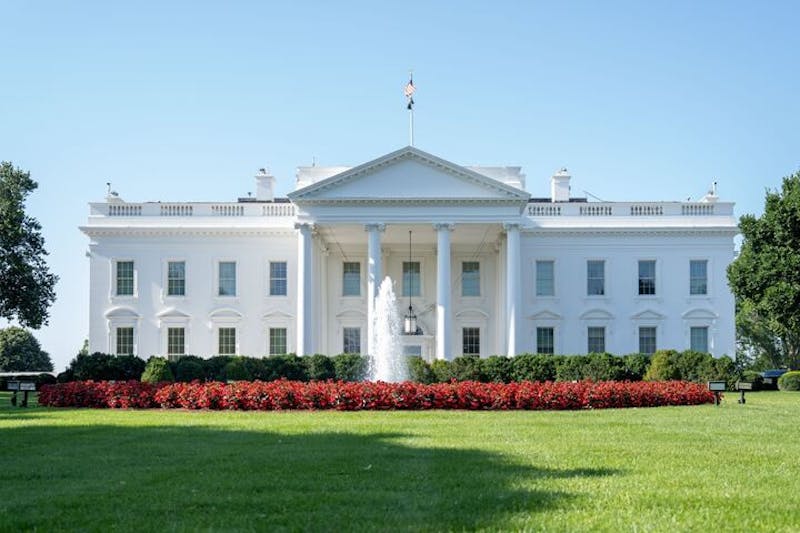The public's growing awareness of acquaintance rape in recent years has spawned a nationwide debate on the topic, but many University students still seem to have widely varying perceptions of the problem's extent on campus. The average prediction was 24.1 percent, coming close to many national estimates that suggest that as many as one in four women may be victims. Responses also ranged widely in the number of women students who said they know victims, with some saying none and others saying "all of them who are sexually active." Overall, 37.5 percent of respondents said they knew at least one rape victim and 46.6 percent said they knew a sexual assault victim. But only 3.7 percent of female respondents said they have been raped by someone they know. Just over 20 percent said they had been sexually assaulted. The discrepancy between these results could be attributed to several factors: that some students may have felt uncomfortable answering the questions truthfully with friends watching, and that a relatively small number of juniors and seniors were polled. Among seniors polled, for example, these percentages increased to 5.5 percent and 33.3 percent. There are no accurate figures for the number of rapes that occur on campus because victims rarely go to University Police, often looking to other groups if they report them at all. Women's Center Director Elena DiLapi said during the 1989-90 school year, the Women's Center saw 20 victims of sexual assault, who then went on to the Victim Support Services department of University Police. Students Together Against Acquaintance Rape reported seeing 40 to 45 during the same time. But between 1987 and 1990, only one student reported a rape to University Police, Commissioner John Kuprevich said. STAAR executive board member Tristan Svare said last night he was not surprised to learn that student estimates of date rape ranged from very high to very low. "Everyone has different experiences," he said. "And many people just don't know how prevalent a problem it really is." He said it is also not surprising that the percentage of women who said they have been date-raped was lower than many national surveys have reported, saying he doubts if all the respondents were honest since many answered the questions while eating lunch with friends. "A lot of the time people aren't really willing to admit [they have been assaulted], especially for something they are going to see in the newspaper." He added the use of the word "rape" in several of the poll's questions may also have affected responses because he said some people are "reluctant to label it rape." The 1,265 students polled on Thursday also expressed strong convictions on several other important questions, including what constitutes rape, who is to blame, and why so few women report the crime. They also gave their opinions on the impact of alcohol on date rape and differences between men and women's sexual activity. The survey also indicated that continuing publicity of the problem has changed their views. More than 80 percent of juniors and seniors who responded said they are more likely to believe a woman has been the victim of a date rape than when they were freshmen. Of the 535 females surveyed, 24 said they had been raped at some point in their lives, and all but four said they knew their rapist. Seven of the 24 are freshmen. Of the 110 women who said they have been sexually assaulted, 40 said the incidents happened on campus. In the case of males, 32 students, making up 4.4 percent of all male respondents, said they were victims of sexual assault up to and including rape. Half of those assaults reportedly occurred on campus. Students' responses suggested several possible reasons for this problem, including alcohol use and differing expectations for men and women. Alcohol's role is indisputable, at least statistically. About 75 percent of the men and at least 55 percent of the women involved in acquaintance rape had been drinking or taking drugs just before the attack, a 1985 survey published in Ms. magazine said. Many University students agree. Over 62 percent of all respondents said they think at least half of all rapes and sexual assaults can be partially attributed to alcohol. But at least one respondent suggested too much attention is paid to alcohol. "Alcohol is not to blame for anything," a female senior said. "Stupid use of alcohol to the point of impaired judgement is." Several students maintained that, although drinking alcohol often leads to problems, the person drinking the alcohol is solely responsible for his or her actions. "Rape is not in any way caused by alcohol," wrote one female senior. "It's caused by a blind misunderstanding of what the word 'NO' means." "Drunk or not, the person committed the rape, not the alcohol," said another respondent. Another source of blame may be the different intentions some men and women bring with them to parties. According to the survey, 41 percent of male students go to parties "looking to have sex with someone that night" at least "occasionally." By contrast, 96 percent of female respondents said they rarely if ever have the same intention and more than 83 percent said they never intend to have sex that night. Males tend to have sex earlier in their relationships, too. While over half of the female students "went out" for at least a year before having sex with their last partner, it took more than a third of the males less than a month to reach the same point. Men and women also had some disagreement on the degree of responsibility a woman bears for rape in certain circumstances. Students were asked to rate the degree of responsibility a woman has on a scale of one to five, five being not responsible at all. If the woman is raped after "dressing provocatively," becoming drunk or going to a man's room or inviting a man to her room, the average of responses, falling between 3.4 and 3.9, indicate that students shy away from blaming the woman. If the woman does not say no clearly, men lean towards saying she is responsible and women lean slightly away from that. In all cases, men were more likely to blame the woman than women were. The Ms. survey found that 84 percent of the men who committed rape said what they did was definitely not rape. Thursday's poll produced similar results. Only 18 male University students of 730 polled, or 2.5 percent, indicated they had committed a sexual assault, while over 5 percent gave no answer. And only 7 percent of males admitted they had suspected their sexual activity may have been "questionable" or "could be interpreted as rape or sexual assault." Nearly 19 percent did not respond to that question. These percentages were clearly much lower than the 20 percent of women who said they have been sexually assaulted. One student who said his activities could be considered "questionable" added: "At this school where people bitch about everything, yes!" But one male junior said he does not let it get to that point. "I always make sure of full consent and immediately stop making advances even if a woman is joking about not wanting sex," he said. Results were mixed about the role fraternities play in the date rape problem, with men being less willing to blame fraternities than women. A slight majority of respondents said fraternities do not deserve all the blame which people tend to assign them. "It's not the actual fraternities, but the stigma of how you're supposed to act at their parties," one female sophomore said. "Even one individual in a frat can give the whole system a bad name." The fraternities are not to blame, said another sophomore, "but those male social ideals that so many seek are to blame, and fraternities by definition are epitomes of those cultural attitudes." If such an incident does happen, the victim soon faces the difficult task of deciding whether or not to report the incident, and if so, to whom. Many who remain silent fear their reputation will be damaged. Many students believe, however, there are sufficient services for rape victims at the University and that these services are moderately well publicized. Over 65 percent of the women polled said they feel there is "a stigma against rape victims." Almost 56 percent of male respondents agreed. Less than five percent of women in the survey who said they were victims of rape or sexual assault went to the police, and two who did went more than a year after being assaulted. "You don't want to be the pin-up Barbie," a student said. "It happens and that's life. Make a deal and you will be the whore of Babylon. Men need their pride." DiLapi agreed that women who have been raped are unfairly stigmatized by society. "People think, 'Why didn't you do something to stop it," she said. ". . . It's a defense mechanism for them so they don't have to realize they are susceptible. [Rape is] not a nice subject. People don't want to talk about it." Many women said they were not sure they would report such an incident, citing various reasons. Some women said they not sure if they would even be able to admit it to themselves. A junior who was sexually assaulted said she decided against going to the police to avoid "embarassment, because society still blames the female and I don't want to be hurt by society's snotty views. Why add salt to a wound?" Many victims polled said they did not file a report for several reasons, including that they did not want to pursue legal action, did not want to tell anyone, and wanted to avoid publicity. And according to the Ms. survey, only 27 percent of the women whose sexual assault met the legal definition of rape thought of themselves as rape victims. Only a little more than half the victims told anyone else, and most of them said they did not use on-campus resources such as Women's Center, STAAR and Women Organized Against Rape. And barely one in five told their parents. Fear of reporting rape can also cause male victims not to tell anyone else. A male who said he was raped but did not file a report said, "Who would believe a guy getting raped?"
The Daily Pennsylvanian is an independent, student-run newspaper. Please consider making a donation to support the coverage that shapes the University. Your generosity ensures a future of strong journalism at Penn.
DonatePlease note All comments are eligible for publication in The Daily Pennsylvanian.







